You can read this exclusive content thanks to the FALATH & PARTNERS law firm, which assists American people with Slovak roots in obtaining Slovak citizenship and reconnecting them with the land of their ancestors.
The town of Humenné was once best known for its chemical industry, a legacy that has largely faded. Today, however, this corner of Upper Zemplín is turning away from smokestacks and towards tourism, cultivating a quieter kind of appeal.
One of Humenné’s standout attractions is a meticulously restored pseudo-Baroque manor house, set amid sprawling English and French-style gardens. The landscaped grounds have become a favourite spot for leisurely afternoons. On weekends, families with young children linger near the central fountain, while others pedal along the gravel paths on bicycles.
The manor house, now recognised as a cultural monument, houses the Vihorlat Museum. It once belonged to the noble Drugeth family, who were granted ownership of Humenné – along with the nearby castles of Brekov and Jasenov – by the Hungarian monarch Charles of Anjou, in return for their loyal service.
In addition to its historical collections, the museum includes a natural history exhibition and an art gallery. Just steps from the manor house lies an open-air museum, where visitors can explore elements of folk culture, including traditional peasant dwellings. For those not inclined to venture into the surrounding villages in search of wooden churches, a preserved example from Nová Sedlica is on display within the museum grounds.
One of the key advantages of the manor house and the open-air museum is their central location. From the park, it is only a short walk to the town’s main square. Although few historical buildings remain – many were demolished during the socialist era – the area still offers a pleasant stroll.
A statue of Švejk marks a literary route through Humenné
Beyond the city centre, visitors to Humenné may wish to stop at the town’s modern railway station. Beside it stands an intriguing statue of a soldier leaning over a well – a literary nod to one of central Europe’s most iconic characters. In "The Fates of the Good Soldier Švejk in the World War", the satirical novel by Czech writer Jaroslav Hašek, the hapless Švejk makes his way to the front in Galicia during the First World War. Though Humenné is not mentioned by name, local lore claims the town’s station was one of his stops, where he refreshed himself at this very well.
The statue forms part of the Švejk cycling route, a trail that blends fiction and history. Stretching 52 kilometres, it connects Humenné with the Polish town of Sanok, tracing the old railway line. Along the way, cyclists encounter wartime cemeteries and wooden churches, each bearing witness to a complex and often overlooked past.
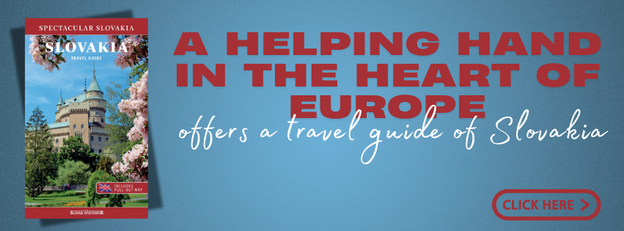
Plans for weddings and restoration at Jasenov Castle
Jasenov, a village now effectively connected to Humenné, can be reached by bicycle – though many opt to drive in order to make the short hike to Jasenov Castle, perched on a forested hill just beyond the village. From the car park, several marked trails and a woodland path lead to the ruins. The ascent takes about half an hour and, while steep in sections, is accessible to most visitors.
At the castle, workers were reinforcing the stone walls – part of a long-running restoration project that began in 2012. The site is extensive, and much remains to be done. One room, the former gunpowder store, has already been rebuilt and fitted with a new roof. From the hilltop, sweeping views of Humenné and the Vihorlatské Mountains open up across the landscape.
Following the visit to the castle, The Slovak Spectator’s attention turned to the village below, where the mayor, Lucia Sukeľová, was overseeing land surveying for a planned seniors’ residence.
Sukeľová has further ambitions for the historic site. “We would like to convert the gunpowder room into a social space where family celebrations can be held in the future. We already have wooden tables and chairs ready for it,” she said.
The castle’s original owners, the Drugeth family, also built a chapel, which is currently being renovated. According to the mayor, the space is expected to serve as a wedding venue in the future.
Additional plans for the site include the construction of gazebos below the castle, where visitors will be able to rest and enjoy refreshments. QR codes are to be installed throughout the grounds, offering digital guides that allow tourists to visualise how individual rooms once appeared, accessed via a mobile application.
In the village itself, a tourist information centre is located within the municipal office. Visitors can mint souvenir coins there – a nod to the castle’s own curious past. While coins were once produced on the hilltop, they were counterfeit. The Drugeth family, known for their extravagant lifestyle, eventually resorted to forging currency.
A castle crossroads
“If the castle grounds are closed and a gate is installed, the coin minting activity will likely be relocated directly to the site,” said Sukeľová. A small museum dedicated to the castle is also planned, to be built beneath the hill near the children’s playground. The project is expected to be completed within two years.
Humenné and the surrounding villages function as a kind of crossroads for tourists, according to the mayor. Many visitors travelling from the nearby Poloniny National Park en route to the Domaša reservoir often stop in the area. The local castles offer enough attractions to fill an entire day.
Cyclists are also being considered in future plans. A joint project with the mayor of Brekov aims to construct a cycle bridge over the Laborec River, allowing cyclists to travel safely between castles without being forced onto busy roads.
A helping hand in the heart of Europe: a travel guide to Slovakia.
At Brekov Castle, ruins, cellars and a quarry in the background
The village of Brekov lies just six kilometres from Jasenov by bicycle, though travelling by car requires passing through Humenné, bringing the total distance to around 12 kilometres.
Brekov Castle, a medieval fortress, was originally constructed as a guard post. Together with the castles in Jasenov, Vinné and Čičva, it once protected a key trade route between Hungary and Poland.
The castle is visible from the main road, though the view is marred by a working quarry encroaching on the castle hill. Signage remains an issue – there is currently no clear indication in the village directing visitors to the site.
Like Jasenov Castle, Brekov Castle is undergoing gradual restoration. The effort was initially led by the Association for the Preservation of Brekov Castle, but in 2022, responsibility was transferred to the local municipality. According to Mayor Radoslav Nemec, the village has since invested tens of thousands of euros in repairs and has involved members of the local Roma community in the reconstruction work.
Facilities at the site remain limited. A small, neglected car park lies directly below the castle, though there is no café or restaurant – only an abandoned car. A restaurant is available in the village. Just below the ruins, a small museum opens on weekends during the summer, offering souvenirs and archaeological finds from the site. Visitors can also book guided tours of the castle’s relatively well-preserved cellars.
Plans are under way to make the site more accessible. “We are planning to build a new parking lot beneath the castle, which will also include bicycle racks, as we aim to be a welcoming stop for cyclists,” said Nemec. The castle draws visitors not only from across Slovakia, but also from Poland and Hungary.
As in Jasenov, Brekov Castle is due to be digitised as part of a broader development project. The municipality also hopes to renovate the local cultural centre, which would serve as a venue for exhibitions.
“If the project is approved, construction could begin in the autumn and be completed by the spring of next year,” Nemec said.
For those drawn to water rather than hilltops, boats can be rented for rowing trips along the Laborec or Ondava rivers – with departures from Humenné on the Laborec, and from Slovenská Kajňa or Sedliská, just below Čičva Castle, on the Ondava.
What to see in Humenné and Vranov nad Topľou districts
Discover Slovakia with our Spectacular Slovakia travel guide.
Humenné
Manor House: Home to the Vihorlat Museum.
Open-air museum of Folk Architecture, Humenné: Features traditional peasant houses and a wooden church from Nová Sedlica.
Brekov Castle: Castle ruins with renovated cellars open to visitors.
Jasenov Castle: Large ruins undergoing gradual renovation, with plans for a wedding hall in the future.
Vranov nad Topľou
Čičva Castle – The ruins of this medieval castle rise above the village of Sedliská, offering picturesque views of the surrounding Ondava River valley.
Barkóczy Family Tomb – Situated below Čičva Castle, this historical site includes exhibitions and serves as the final resting place of the noble Barkóczy family.
Breziny Pavlovce Ranch – A working horse farm that also offers accommodation, ideal for rural escapes.
Basilica of the Nativity of the Virgin Mary – A late Gothic church located in the town of Vranov nad Topľou, notable for its architectural heritage.
Domaša reservoir – A popular destination for summer recreation and water sports in eastern Slovakia.
Church on Trepec Hill – One of three churches in the Domaša area that was not submerged during the creation of the reservoir.
Hanušovce nad Topľou
Baroque manor house housing a historical museum.
Early Gothic church with Byzantine elements, dedicated to the Assumption of the Virgin Mary.
Šóšov Manor House, home to a municipal cultural centre with a library and gallery.
Archaeological park featuring examples of prehistoric dwellings.
The longest arched railway viaduct in central Europe.
Spectacular Slovakia travel guide
A helping hand in the heart of Europe thanks to our Slovakia travel guide with more than 1,000 photos and hundred of tourist spots.
Our detailed travel guide to the Tatras introduces you to the whole region around the Tatra mountains, including attractions on the Polish side.
Lost in Bratislava? Impossible with our City Guide!
See some selected travel articles, podcasts, and traveller info as well as other guides dedicated to Nitra, Trenčín Region, Trnava Region and Žilina Region.


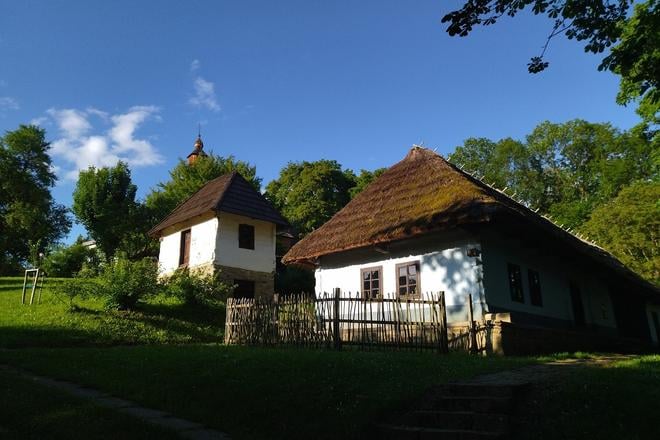 An open-air museum near the manor house in Humenné. (source: SME/Jozef Ryník)
An open-air museum near the manor house in Humenné. (source: SME/Jozef Ryník)
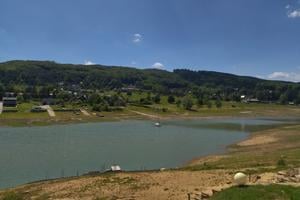
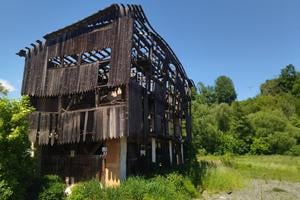
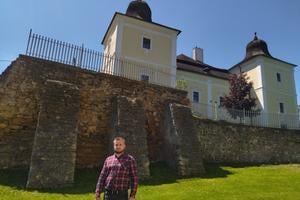
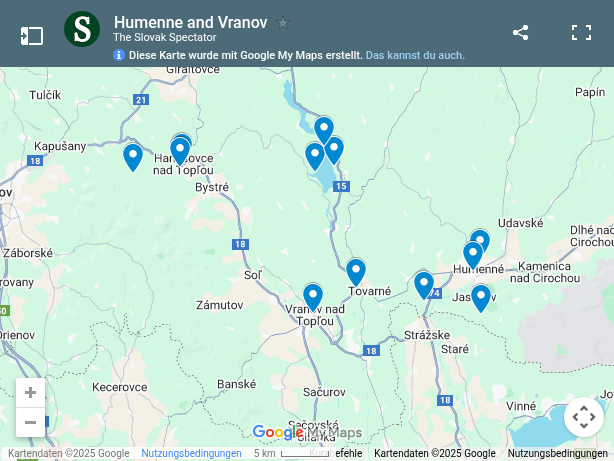
 An open-air museum near the manor house in Humenné. (source: SME/Jozef Ryník)
An open-air museum near the manor house in Humenné. (source: SME/Jozef Ryník)
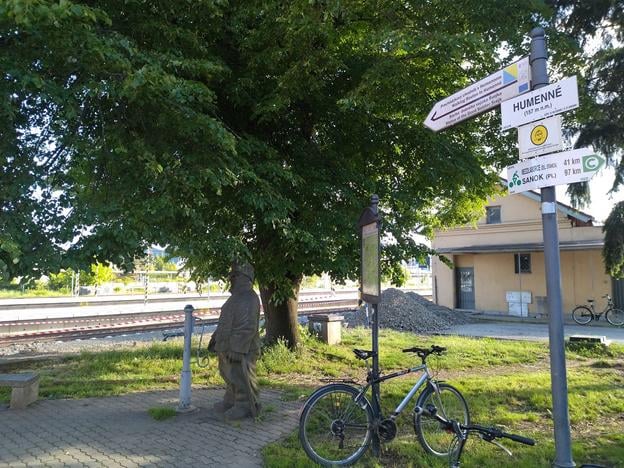 The good soldier Švejk also stopped in Humenné. (source: SME/Jozef Ryník)
The good soldier Švejk also stopped in Humenné. (source: SME/Jozef Ryník)
 Jasenov Castle with a view of the Vihorlat Mountains (source: SME/Jozef Ryník)
Jasenov Castle with a view of the Vihorlat Mountains (source: SME/Jozef Ryník)
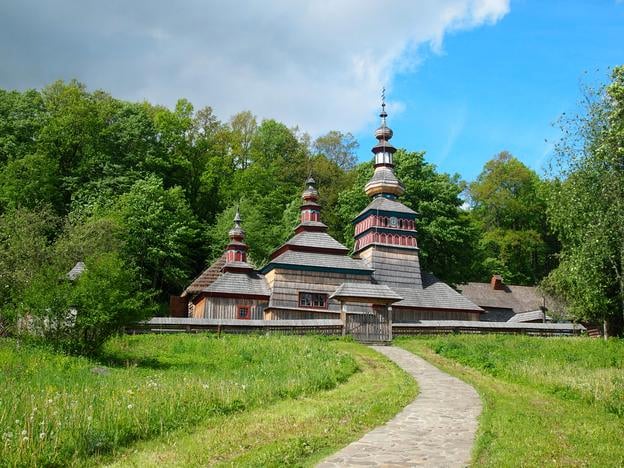 Wooden church near Bardejov (source: Donald Stoll, Don Stoll, Daniel Stoll)
Wooden church near Bardejov (source: Donald Stoll, Don Stoll, Daniel Stoll)